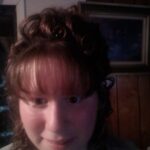In the 1960s, men’s crew cuts gave way to ponytails, and sideburns were traded for moustaches and beards. The fedora was out, and the bandana was in. Women’s long, straight tresses no longer required weekly visits to the beauty salon. The hair fashions popularized in the 1950s were definitely being swapped for something new and different. The trends started with the Beatniks and were fueled by the British invasion, which hit the United States mid-decade.
Men hadn’t experienced the hairstyle freedom in the 20th century that they were afforded in the sixties. The Beatles were constantly asked about their “long hair” in interviews. Young people all over the country, as well as musicians of the day, were mimicking their cut, often referred to as the “mop top”. The afro was popular, not just for African Americans, but anyone with hair curly enough to pull it off. Just let it keep growing onward and outward! As the decade marched forward, the lengths were undeniably growing longer, especially for men… much to the chagrin of many parents.
Ladies’ styles went from pouffed-up bouffants, held together with hairspray and gel, to the mod look, straight and parted down the middle. For special occasions, a variation of the beehive was still okay. Think Audrey Hepburn in Breakfast at Tiffany’s. The jar of pink gel, Dippity-Do, was usually brought out for those high fashions. Barrettes and ribbons, on the whole, were replacing hairspray. A popular style was to braid a small portion of the hair on one or both sides. This look mimicked the laid-back attitude of the so-called hippies. In order to obtain a sleek appearance, the best rollers used by girls back then were actually soda cans! Of course if the hair wasn’t naturally straight, a good friend was enlisted to iron it. There were no flat irons in those days…I’m talking about your mother’s ironing board.
Unique hairdos emerged in the 1960s. If a woman had the patience, she could flip her locks up on the ends like the female singers of the day, such as Leslie Gore. Sometimes turning it under into a pageboy was easier. For the brave-hearted, the short, boy-cut of the popular model, Twiggy, was copied. If it happened to be a bad hair day, simply pull it into pigtails. Better yet, just throw on a wig like Dianna Ross and the Supremes did, or sport a wiglet (a little bunch of fake curls set on top of the head). And what about those fur hats that were supposed to look like hair…what was up with those??
Hair stylist, Vidal Sassoon, led the pack in hair design. His models often graced the magazine covers. My sisters and I were asked to have our hair cut in one of the Sassoon hair shows, but we declined. We had long, straight hair and were afraid we would end up with one of his famous “one-eyed girl” bobs. Looking back, we sure let a good experience pass us by!
“…and the sign says ‘Long-haired, freaky people need not apply'”. This 5 Man Electrical Band hit of 1971 reflected the previous decade well with trends that became even more dominant into the seventies. Hair was seen as a statement. With the political and social unrest, it was unquestionably a form of rebellion and self-expression. In today’s society, no one takes a second look unless the style is extremely outlandish. Back then, heads would turn and opinions were formed. As with everything else in the sixties, hairstyles hold a place in our history that is distinctive.
If you enjoy the Sixties, check out my website, www.GroovyBoomerPower.com.
Related articles: Dances of the Sixties, Music of the Sixties, Fashions of the Sixties



